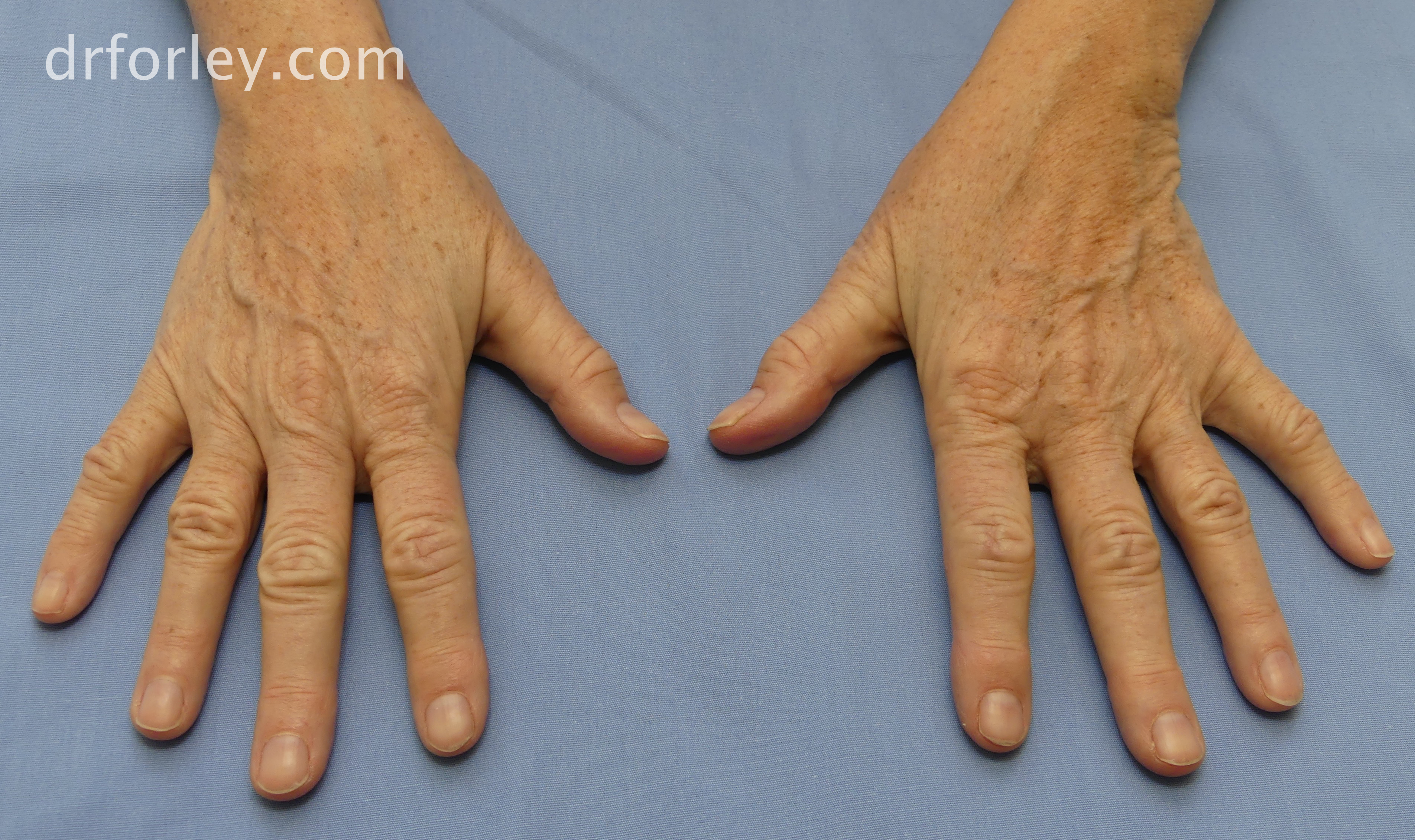Now that you have undergone a body contouring procedure – liposuction, tummy tuck or body lift – you will want to maintain the benefits…
Maintaining the results you have achieved after cosmetic body contouring surgery requires a long term commitment to a healthy diet and a reasonable amount of exercise. The reason is simple, if the calories you consume exceed the calories you burn, the excess will get deposited as fat. This balance can also be affected by your metabolic rate, which can vary with age. As you get older, you will have to work harder to maintain your calorie balance. Finally, stress can play a role in your life and affect your overall health. Read New York City Plastic Surgeon Dr. Bryan Forley‘s advice on how to reduce its impact on your sense of well being.
Good nutrition requires a satisfactory diet. Finding a diet with the right combination of nutrients, that works with your lifestyle and that you can also enjoy is a very individual process. There are many nutrients that make up a routine diet, such as fats, carbohydrates, protein, fiber and vitamins. Below, we will give you a general idea of what each nutrient entails.
Fats are nutrients that give you energy. Fats can either be saturated or unsaturated and most foods have both types of fat. Saturated fat or “bad” fat is mostly located in animal products such as milk, cheese, and meats. If you are going to eat meat try poultry or fish as they have less saturated fat than red meats. Saturated fats are in coconut oil, palm oil, and cocoa butter, which are processed in snacks, coffee creamers, and whipped toppings. Trans fat is another type of “bad” fat that is found in shortening and partially hydrogenated oils, such as chips, crackers, cookies, some margarines, and salad dressings. There are “good” fats, and those are known as unsaturated fats, which help to lower cholesterol. The two types of unsaturated fats are monounsaturated and polyunsaturated. Monounsaturated fat is located in canola, olive, and peanut oils. Polyunsaturated is found in safflower, sunflower, sesame, soybean, and corn oils, and mainly in seafood. Omega-3 fatty acids are a type of polyunsaturated fat that can reduce the risk of heart disease. Salmon or mackerel are full of Omega-3 fatty acids and it is recommended that you should eat 3oz. twice a week. Other sources of “good” fat are flaxseeds and flaxseed oil, nuts, and seeds. It is recommended that 20-35% of your total calories each day come from fat. This includes, no trans fat, up to 10% polyunsaturated fat, up to 10% saturated fat, and 10-15% monounsaturated fat.
Processed carbohydrates such as white bread, white rice, cookies, and soft drinks are made up of simple sugars and refined-flour products, which contribute to the problems of obesity and type II diabetes. “Good” carbohydrates include whole grains, which are less processed and maintain more healthful properties. Whole grains are high in fiber, contain antioxidants and vitamins and minerals, are virtually fat-free, and are more slowly digested and absorbed than refined carbohydrates. It is recommended to eat three servings per day of whole-grain carbohydrates. If you’re looking for a whole-wheat product, the first ingredient listed on the label should be whole wheat. Whole-grain carbohydrates include brown and wild rice, barley, bulgur or cracked wheat, whole-wheat pasta, buckwheat, whole kernel corn, and popcorn. Bran cereals are also a good source as they are the highest in fiber. When choosing breads, select those with at least 3 grams of fiber per slice, and cereals with 5 grams or more per serving.
Protein can help you shed those unwanted pounds and keep your belly full. Quality protein also helps you sustain muscle during weight loss, improve muscle fitness, improve immunity and antioxidant function, build HDL cholesterol, and enhance insulin and leptin function – all of which contribute toward optimal weight management efforts over time. But it’s important to eat the right amount and the right kind of protein to get the health benefits. Seafood is one of the best sources of protein because it’s usually low in fat. Fish such as salmon is a little higher in fat but it is the heart-healthy kind, filled with Omega-3 fatty acids. White meat of poultry is good for excellent, lean protein rather than dark meat, which is higher in fat. Milk, cheese, and yogurt are not only dairy foods but are excellent sources of protein, containing valuable calcium. Choose skim or low fat dairy to keep bones and teeth strong, prevent osteoporosis, and enhance weight loss. Eggs are one of the least expensive forms of protein. The American Heart Association says normal healthy adults can safely enjoy an egg a day. One-half cup of beans contains as much protein as three ounces of broiled steak and they are loaded with fiber to keep you feeling full for hours. Pork tenderloin is great and this versatile white meat is 31% leaner than 20 years ago. The intake of soy protein daily can help lower cholesterol and reduce the risk of heart disease. Combine soy protein foods like tofu with a healthy low fat diet. Lean beef has only one more gram of saturated fat than a skinless chicken breast. Lean beef is also an excellent source of zinc, iron, and vitamin B12. If you are looking for protein on the go, grab a meal replacement drink, cereal or energy bar. Check the label to be sure the product contains at least six grams of protein, and is low in sugar and fat. To get the potential weight loss benefit, experts advise aiming for around 120 grams of protein a day. If you want to increase your protein intake, do it slowly over the course of a week.
Eating a higher-fiber diet has been shown to lower blood cholesterol levels, improve and prevent constipation, and slow digestion. The American Dietetic Association recommends the intake of 20 to 35 grams of fiber a day. There are two types of fiber, insoluble and soluble. Though both have health benefits, there’s a difference between the insoluble type of fiber found in whole grains, carrots, tomatoes, and lettuce, and the softer, water-soluble type found in oatmeal, pears, strawberries, and apples.
Insoluble fiber doesn’t dissolve in water. It helps keep bowel movements regular, and may reduce the risk of colon problems. It may also reduce the risk of hemorrhoids, varicose veins, and obesity (by making us feel full). Insoluble fiber is in: Whole-wheat grain and wheat bran, brown rice, bulgur, seeds, and vegetables (carrots, cucumbers, zucchini, celery, and tomatoes).
Soluble or viscous fiber is the softer type that dissolves in water. When digested, it helps prevent cholesterol from being absorbed in the intestines. This type of fiber is also thought to help minimize the rise in blood sugar levels after a meal, which is particularly helpful for people with diabetes. This type of fiber comes from: beans, oatmeal and oat bran, some fruits (apples, mangoes, plums, kiwi, pears, blackberries, strawberries, raspberries, peaches, citrus fruits, dried apricots, prunes, and figs), and some vegetables (dried peas, beans, and lentils).
Vitamins are essential nutrients that contribute to a healthy life. There are many good reasons to consider taking vitamin supplements. Your body uses vitamins for a variety of biological processes, including growth, digestion, and nerve function. There are 13 vitamins that the body absolutely needs: vitamins A, C, D, E, K, and the B vitamins (thiamine, riboflavin, niacin, pantothenic acid, biotin, vitamin B-6, vitamin B-12 and folate).
There are two types of vitamins, water-soluble and fat-soluble. Water-soluble vitamins are easily absorbed by the body, which doesn’t store large amounts. The kidneys remove those vitamins that are not needed. Fat-soluble vitamins are absorbed into the body with the use of bile acids, which are fluids used to absorb fat. The body stores these for use as needed.
Dr. Forley recommends VitaMedica as a supplemental vitamin program. The morning and evening packets make it easy and convenient to stick with a daily routine. The program provides a combination of vitamins and nutritional supplements, filled with minerals, organic flax seed oil, and antioxidants. It is formulated with nutrients that support glowing skin, hard nails & lustrous hair; strong bones and flexible joints; and a vital cardiovascular system.
If the concept of healthy eating seems challenging, begin by slowly incorporating these recommendations into your diet. Drastic changes are more difficult to maintain long term.
Follow these links to help you with your calorie intake:
https://nutritiondata.self.com/tools/calories-burned
NEXT BLOG POST BY NEW YORK PLASTIC SURGEON DR. BRYAN G. FORLEY: The best exercises to maintain your new body shape
Tags: american dietetic association, Body Contouring, body shaping, calorie intake, cholesterol, cosmetic surgery blog, dr bryan g forley, good fats, healthy eating habits, liposuction, maintenance after liposuction, new york plastic surgeon, Nutrition, NYC plastic surgeon, nyc plastic surgeon dr forley, omega 3 fatty acids, Plastic Surgery, plastic surgery blog, processed carbohydrates, Tummy tuck, vitamedica supplements
Written by Dr. Forley on August 14, 2011





